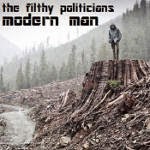Bellmeadow, a member of Deep Green Resistance Colorado, reports on the planned construction of the newest biggest mall in the US. The mall in Castle Rock, CO will destroy the home of one of the largest remnant prairie dog colonies on Colorado’s Front Range. Already reduced to 3% of their native range and less than 1% of their original population, prairie dogs would be considered an endangered species if not for the loophole of calling them “pests.”
Recently I heard news that our county (Douglas) was getting one of the nation’s biggest malls. The news simultaneously sunk my heart and angered me. Why the hell do we need another mall? To consume the world? Then my mind raced to the location of the mall, and the prairie dogs that live there. I had been worried about this colony before, about the strong possibility that the remaining colonies comprising hundreds of prairie dogs would be destroyed for some kind of development. After all, a Lowe’s store, an outlet mall, a housing project, and a tire store had occupied their territory and had already killed thousands of these dogs in the name of “development.” And this was the final solution for the 3,000 to 8,000 remaining burrows: complete annihilation of the prairie dogs for a shopping mall set to cover 170 acres in concrete.
Regular readers of this blog or listeners of Derrick Jensen’s Resistance Radio may remember his interview with Con Slobodchikoff on prairie dog language, in which they discussed their high level of intelligence. Sacrificing these beings for short term profit and another shopping mall should be criminal.
Unfortunately, as we know all too well, money and those who wield it write the laws. There’s probably no chance of saving the habitat for the colony under threat; the best-case scenario is “relocation”, a horrible process of sucking the dogs out of their homes, killing many and splitting up families in the process, and moving them to strange new territory where they may or may not survive. Even implementing this salvaging rescue mission will prove difficult, as few landowners are willing to accept the forced transplants, and if a location can be found, it’ll be another struggle to convince the developer to hold off on construction three months so the prairie dogs can be moved at the least harmful time of year.
If you care about prairie dogs and the other people crushed by the relentless expansion of civilization, if you feel anger or grief or shame, let that guide you to action. Join Deep Green Resistance and the culture of resistance!



